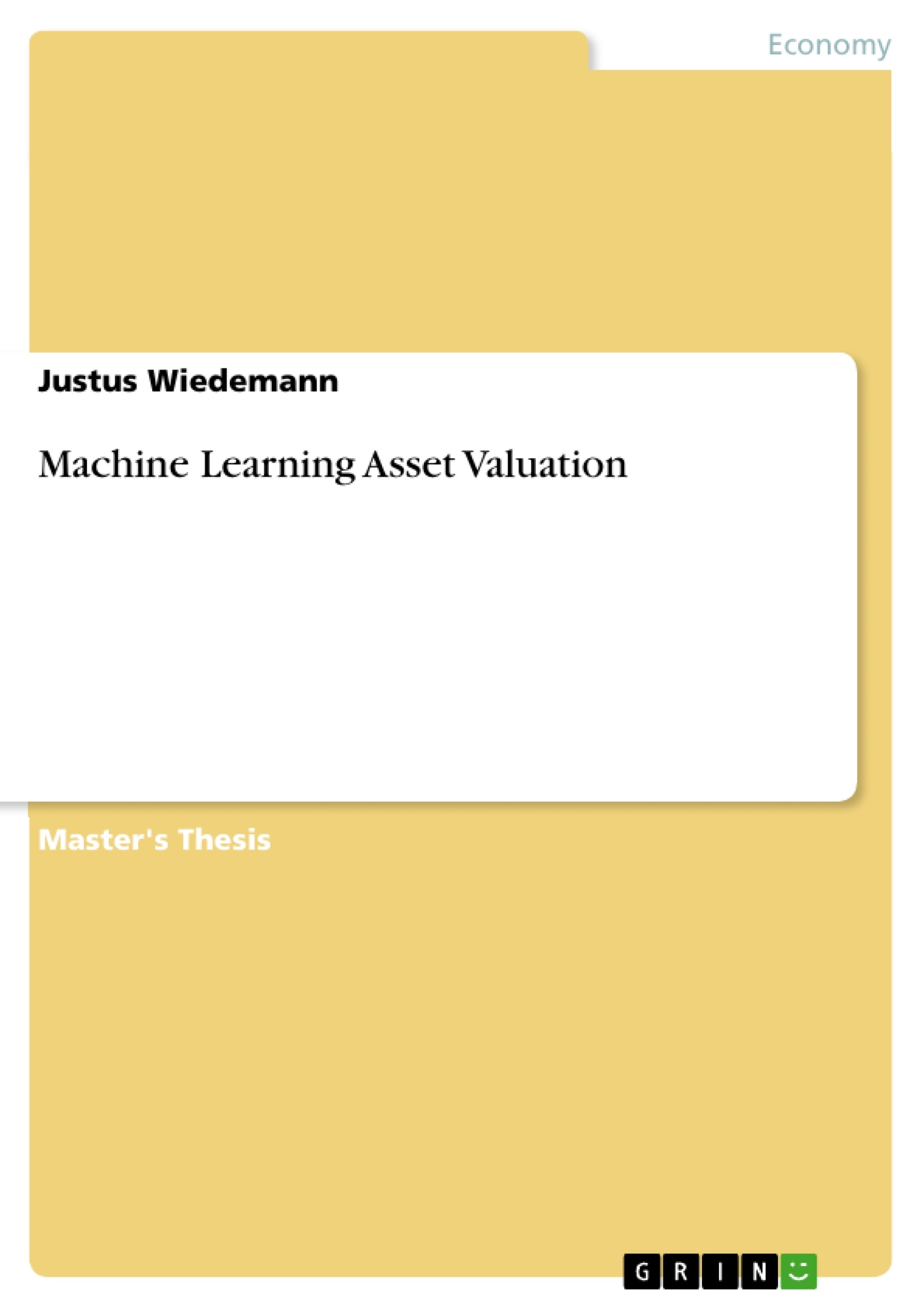This Master Thesis introduces basic concepts and methods of Machine Learning as well as applying them on a virtual buy- or sell algorithm enabled by an accurately predicting classifier. In the first section, the historical development of Machine Learning is presented. Consequently, an array of classifiers is described in detail. The third section results in a python-based Machine Learning application of seven classifiers, a cross validation and in initializing the final valuation algorithm. The optimal classifier predicts following day Open Prizes for the S&P 500 with 72% accuracy outperforming market return by nearly 150% within the span of one month.
Inhaltsverzeichnis (Table of Contents)
- 1 Abstract
- 2 Artificial Intelligence and Machine Learning
- 3 Machine Learning Techniques
- 3.1 Cross Validation
- 3.2 Decision Trees
- 3.3 k Nearest Neighbors
- 3.4 Support Vector Machines
- 3.5 Ensemble Methods
- 4 S&P 500 Buy or Sell Valuation
- 4.1 Problem Introduction
- 4.2 Dataframe Features
- 4.3 Applicable Machine Learning Classifiers
- 4.4 Cross Validation and Model Performance
- 4.5 Virtual Portfolio
- 4.6 Caveats and Outlook
- 5 Appendix
- 5.1 Figures
- 5.2 Tables
- 5.3 Python Code
Zielsetzung und Themenschwerpunkte (Objectives and Key Themes)
This Master Thesis explores the application of Machine Learning techniques to develop a virtual buy or sell algorithm for the S&P 500 index. It aims to demonstrate the potential of Machine Learning in financial prediction and analyze the accuracy and effectiveness of various classification algorithms.
- Historical development of Machine Learning
- Overview of different machine learning classifiers
- Implementation of machine learning algorithms for financial prediction
- Evaluation of classifier performance through cross-validation
- Creation and analysis of a virtual portfolio based on the prediction model
Zusammenfassung der Kapitel (Chapter Summaries)
- Chapter 1: Abstract: This chapter provides a brief overview of the thesis, outlining its objectives, methodology, and key findings. It introduces the concept of using Machine Learning for financial prediction and highlights the application of a virtual buy or sell algorithm.
- Chapter 2: Artificial Intelligence and Machine Learning: This chapter delves into the historical development and fundamental concepts of Artificial Intelligence and Machine Learning, providing a theoretical foundation for the subsequent analysis.
- Chapter 3: Machine Learning Techniques: This chapter presents a detailed description of various machine learning techniques, including cross validation, decision trees, k nearest neighbors, support vector machines, and ensemble methods. It explores the strengths and weaknesses of each technique and their relevance to financial prediction.
- Chapter 4: S&P 500 Buy or Sell Valuation: This chapter focuses on the practical application of Machine Learning to predict the future price movements of the S&P 500 index. It introduces the problem, data features, applicable classifiers, cross-validation results, and the performance of the virtual portfolio. The chapter concludes with a discussion of limitations and potential future directions.
Schlüsselwörter (Keywords)
Machine Learning, Artificial Intelligence, Financial Prediction, S&P 500, Classification Algorithms, Cross Validation, Virtual Portfolio, Buy or Sell Algorithm, Data Analysis, Python.
- Citation du texte
- Justus Wiedemann (Auteur), 2017, Machine Learning Asset Valuation, Munich, GRIN Verlag, https://www.grin.com/document/373193



